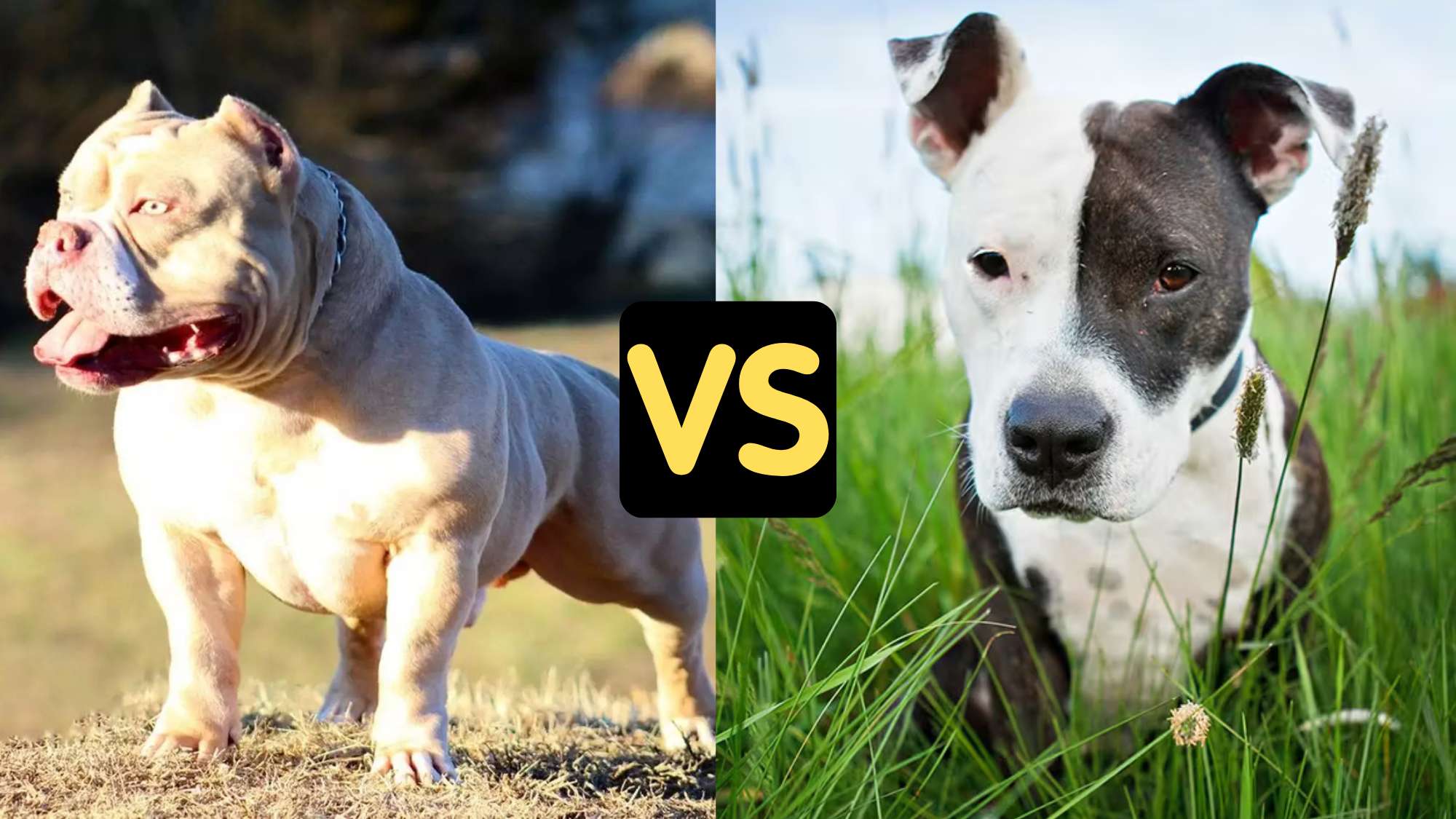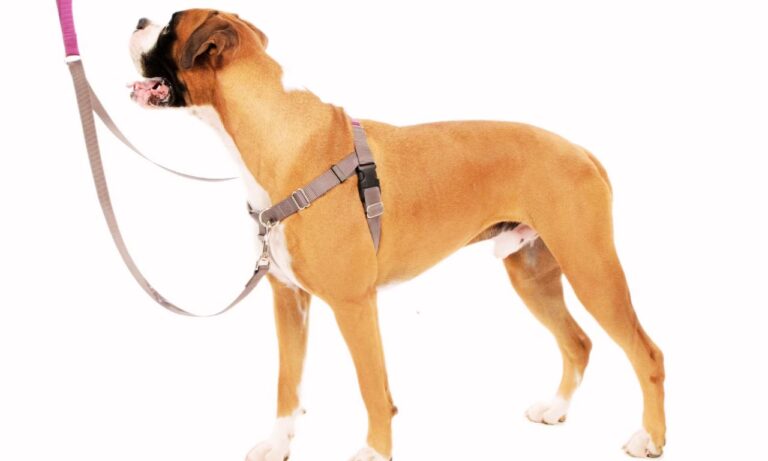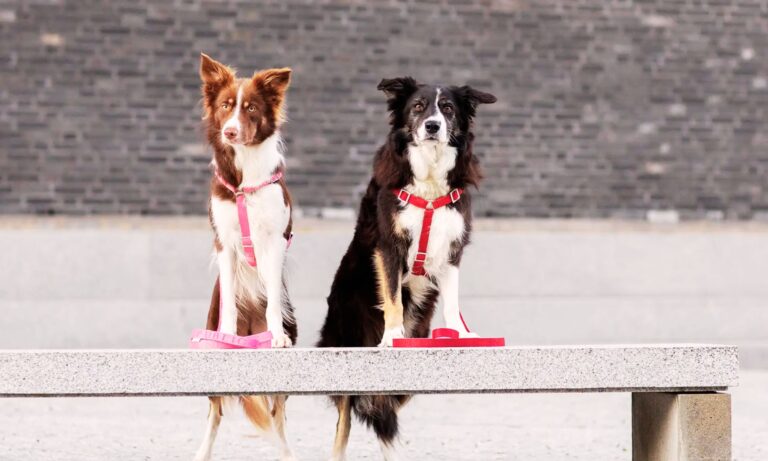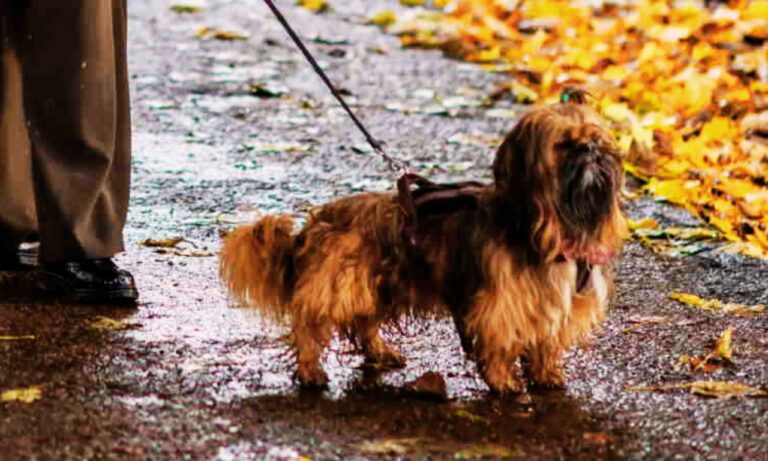| Summary: The XL Bully weighs between 70-120 pounds and stands 17-20 inches tall, while the American Pitbull Terrier typically weighs 30-65 pounds and stands 18-21 inches tall. XL Bullies are bulkier, with a muscular build, while Pitbulls are more athletic and lean. Both breeds have a strong bite force around 235 PSI. |
The xl bullies vs pitbull are often confused due to their similar ancestry, but they are distinct in size, dog temperament, and purpose. The XL Bully is a larger, bulkier version of the American Bully, bred for companionship and calmness.
The Pit Bull, often referring to the American Pit Bull Terrier (APBT), is a leaner, more agile breed with high energy and strong work ethics. Both breeds are affectionate and loyal, but choosing between them requires a clear understanding of their differences in lifestyle compatibility, training, and care needs.
Ensure your Newfoundland’s comfort and security with expert tips on how to ensure a safe collar fit for Newfoundland.
From size and physical appearance to temperament, health issues, and family suitability, this article breaks down every key distinction between the XL Bully vs Pitbull, helping potential owners make informed decisions.
Blog Highlights
ToggleComparison Table: XL Bullies vs Pitbull
The XL Bully is a companion-focused breed, while the Pit Bull thrives in active households. Smart dog gear like GPS collars and harnesses can support training and safety for both.
| Feature | XL Bullies | Pitbull |
| Weight | 70-120 lbs | 30-65 lbs |
| Height | 17-20 inches | 18-21 inches |
| Bite Force | 235 PSI | 235 PSI |
| Build | Bulky, muscular | Lean, athletic |
| Temperament | Protective, confident | Loyal, energetic |
XL Bullies vs Pitbull: Origins and Breed Development
Pit Bull Origins
The Pit Bull name is broadly used to describe breeds such as the American Pit Bull Terrier (APBT), Staffordshire Bull Terrier, and American Staffordshire Terrier. The APBT is most commonly associated with the “Pit Bull” identity in the United States.

The roots of the Pit Bull trace back to early 19th-century England, where bulldogs were bred with terriers for blood sports like bull-baiting and dog fighting. When these cruel practices were outlawed, the breed evolved into a loyal, hardworking companion. In the U.S., APBTs were used as farm dogs, hunting aids, and family protectors.
Despite a history often marred by controversy, well-bred Pit Bulls are known for their intelligence, tenacity, and loyalty. They continue to serve as working dogs in law enforcement, therapy, and sports.
XL Bully Origins
The XL Bully is a specific size variation of the American Bully breed, developed in the 1990s in the U.S. Breeders crossed American Pit Bull Terriers with other bulldog-type breeds like the American Bulldog, English Bulldog, and Olde English Bulldogge. The goal was to create a more muscular, calm, and family-oriented version of the APBT.

The American Bully was officially recognized by the United Kennel Club (UKC) in 2013, and the XL variant quickly became one of the most popular due to its commanding presence and gentle demeanor.
Unlike Pit Bulls, XL Bullies were never bred for work or combat but strictly for companionship and conformation. This selective breeding has shaped their unique temperament and physique.
XL Bully vs Pitbull: Physical Appearance and Build
Size and Weight
The most obvious difference between the XL Bully and the Pit Bull is size.
- Pit Bull (APBT): Weighs between 30–60 lbs (13–27 kg) and stands about 17–21 inches (43–53 cm) tall. It has a lean, muscular build ideal for agility and work.
- XL Bully: Weighs 70–120+ lbs (32–54+ kg) and stands between 19–23 inches (48–58 cm) tall. This breed is bulkier, broader, and more imposing in appearance.
Head and Facial Features
- Pit Bull: Has a square-shaped head, strong jawline, and sleek, athletic features with a longer, more defined muzzle.
- XL Bully: Displays a broader skull, shorter muzzle, thicker neck, and often a more wrinkled face, resembling a mix of bulldog and terrier features.
Coat and Colors
Both breeds have short, smooth coats that are easy to maintain. XL Bullies come in a wide array of colors including blue, lilac, champagne, merle, and tri-color patterns. Pit Bulls also have variety but tend to be more consistent in solid and brindle shades.
To ensure both breeds are comfortable and secure during walks, especially given their strength, GPS-enabled harnesses and well-fitted collars are recommended.
Discover the ideal fit by learning what size collar for Newfoundland dog to ensure your pet’s comfort and safety.
Temperament: XL Bully vs Pitbull
Pit Bull Temperament
Pit Bulls are best known for their intense loyalty, intelligence, and high energy. They are affectionate toward family but may be reserved or reactive around unfamiliar dogs or small animals due to their prey drive.

Key Traits of Pit Bulls:
- Highly energetic and needs physical/mental stimulation
- Loyal and protective, forming deep bonds with owners
- Extremely intelligent and responsive to training
- Requires early socialization to reduce reactivity
XL Bully Temperament
XL Bullies are calmer and more laid-back. They retain the loyalty and affection of the Pit Bull but are less intense, making them ideal for families with children or less active households.

Key Traits of XL Bullies:
- Gentle, stable, and affectionate with all family members
- Naturally sociable and less reactive than Pit Bulls
- Lower energy, enjoying companionship over rough play
- Very trainable with positive reinforcement
Which is More Family-Friendly?
Both breeds are loving and capable family dogs when properly trained and socialized. However, XL Bullies tend to be more tolerant with children and new experiences, whereas Pit Bulls require consistent training and structured environments. For busy families or first-time owners, XL Bullies may be the better fit.
For expert tips on how to fit a collar on a Belgian Shepherd, this guide offers simple steps to ensure your dog’s collar fits securely and comfortably.
Training and Exercise Needs: XL Bullies vs Pitbull
Training the Pit Bull
Pit Bulls thrive in environments with clear boundaries and structured routines. They respond best to positive reinforcement and are excellent candidates for obedience, agility, and even service dog roles.

Training Tips:
- Begin training early using consistent, positive methods
- Incorporate agility and advanced commands for stimulation
- Socialize early to minimize dog-aggression or prey drive
- Always supervise interactions with other pets
Training the XL Bully
Although more relaxed, XL Bullies still benefit from consistent training. They are highly food-motivated and eager to please, making basic obedience training straightforward.
Training Tips:
- Use reward-based training with gentle corrections
- Start early socialization with people and dogs
- Reinforce calm behaviors due to their size and strength
- Avoid harsh discipline as they are sensitive to tone
Exercise Requirements
- Pit Bull: Needs 60–90 minutes of high-intensity exercise daily. Ideal for active owners who enjoy running, hiking, or dog sports.
- XL Bully: Requires 30–60 minutes of moderate activity. Long walks and interactive play sessions are sufficient.
To support training and diet schedules, pet tech like automatic feeders and smart collars can be useful tools.
For detailed guidance on selecting the correct collar size for a Belgian Shepherd, this article provides essential tips to ensure your dog’s comfort and safety.
Health and Lifespan: XL Bullies vs Pitbull
Pit Bull Health Concerns
- Hip Dysplasia – Inherited joint issues that can limit mobility.
- Skin Allergies – Often due to food or environmental triggers.
- Heart Conditions – Some lines are prone to congenital heart defects.
- Average Lifespan: 12–14 years
XL Bully Health Concerns
- Brachycephalic Syndrome – Some XL Bullies have shorter muzzles, causing breathing difficulties.
- Joint Problems – Their heavy build makes them more prone to hip and elbow dysplasia.
- Obesity – Prone to weight gain if under-exercised or overfed.
- Average Lifespan: 10–12 years
XL Bullies need extra care with joint health, including orthopedic beds and joint supplements, while Pit Bulls require regular checkups for allergies and heart health.
Legal Considerations and Breed Misidentification
In some countries and U.S. cities, both XL Bullies and Pit Bulls may fall under breed-specific legislation (BSL). For example, the UK government classified XL Bullies as a banned breed under the Dangerous Dogs Act 1991 as of 2024, requiring owners to register for exemptions and follow strict ownership rules.
Pit Bulls are also banned or restricted in several regions, making it essential for prospective owners to verify local laws before adopting.
Misidentification is a common problem, especially in shelters where mixed breeds may be incorrectly labeled as Pit Bulls or Bullies. DNA testing and proper registration help clarify breed identity and protect responsible owners.
XL Bully vs Pitbull: Grooming and Maintenance
Grooming Needs for Pit Bulls
Pit Bulls have short, smooth coats that are easy to maintain. Their grooming routine primarily involves regular brushing to remove dead hair, as they shed moderately year-round. Bathing should be done as needed, but frequent bathing can lead to dry skin, so it’s best to use gentle, dog-friendly shampoos.
- Brushing: Once a week to keep their coat shiny and healthy.
- Bathing: Every 6-8 weeks or when necessary.
- Nail Trimming: Regular trims to avoid overgrowth.
- Ear Cleaning: Weekly checkups to prevent ear infections.
Grooming Needs for XL Bullies
Like Pit Bulls, XL Bullies have short coats but their heavier, bulkier frame means more care is needed for their skin and joints. Due to their bulkier build and lower activity level, XL Bullies can be prone to developing skin folds, especially around the face and neck. These areas need to be cleaned regularly to prevent infection.
- Brushing: Weekly brushing to maintain their coat and remove loose fur.
- Bathing: Monthly or as needed, with an emphasis on moisturizing shampoos to prevent dryness.
- Skin Fold Care: Regular cleaning of skin folds with wipes or a damp cloth to avoid irritation.
- Nail Trimming and Ear Cleaning: Similar to Pit Bulls, trimming nails regularly and checking ears for infections are crucial.
Both breeds benefit from a consistent grooming routine to maintain their coat, skin, and overall health. Additionally, XL Bullies’ extra skin folds require additional attention to avoid infections. Discover the perfect collar size for an Anatolian Shepherd Dog to ensure comfort and security for your furry friend.
Which Breed is Right for You?
Choosing between an XL Bully vs Pitbull comes down to your lifestyle, living space, and experience as a dog owner.
Choose a Pit Bull if you want:
✅ A high-energy, athletic companion
✅ A dog that excels in sports and advanced training
✅ A lean, agile build suited for active households
✅ A loyal and focused working dog personality
Choose an XL Bully if you want:
✅ A calm, affectionate companion for family life
✅ A lower-energy dog that enjoys lounging
✅ A dog with a strong, muscular build but soft temperament
✅ A gentle guardian that gets along with children and pets
Both breeds require early training, firm leadership, and consistent care. However, the XL Bully fits best in households seeking a large but gentle companion, while the Pit Bull thrives with active owners who can keep up with its physical and mental needs.
Final Thoughts: XL Bully or Pit Bull?
Both xl bullies vs pitbull breeds offer immense love, loyalty, and companionship. The main differences lie in energy levels, size, and social adaptability. If you’re looking for a loyal jogging partner with endless stamina, the Pit Bull is your dog. But if your dream companion is a gentle giant who enjoys cuddles and calm, the XL Bully is the perfect fit.
No matter which breed you choose, responsible ownership—including training, exercise, healthcare, and socialization—is what shapes a well-behaved and balanced dog.
Explore our guides on collar sizes for large breeds and the best smart collars for Bullies and Pit Bulls to enhance your dog’s comfort, training, and safety.
Learn more about the unique double-layered coat of an Anatolian Shepherd and how to care for it effectively.





